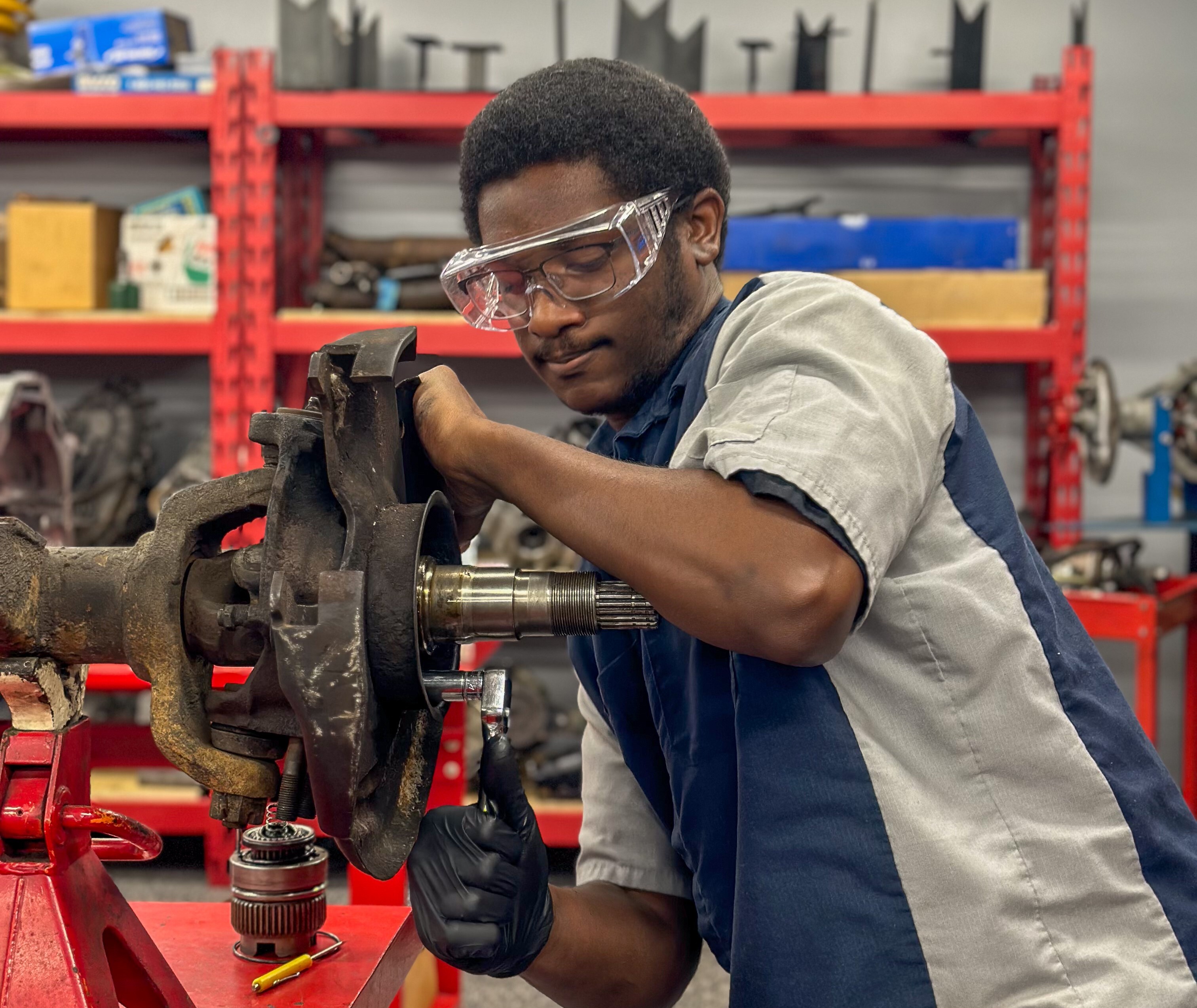In today’s world, success doesn’t always require a four-year degree. Many people are discovering the advantages of choosing to learn a trade, a decision that can lead to rewarding, hands-on work, steady income, and job security. But what exactly is a trade, and what does it mean to learn one?
A trade is a skilled job that typically involves manual or mechanical work, such as heating and air conditioning, electrical work or welding. These are essential careers that keep our homes running, our cars moving, and our communities healthy. Learning a trade means acquiring the practical skills and technical knowledge needed to work in one of these hands-on professions. Whether you're fixing engines or wiring buildings for electricity, trades offer direct entry into careers that matter.
Quick Links
-
How to learn a trade?
-
What is a good trade to learn?
-
How to apply to a trade school?
-
What to expect in trade school?
How to learn a trade?
-
So, you’ve decided to pursue a skill-based career, but how do you start? Understanding how to learn a trade is the first step to building a solid future.
- Hands-On Training
The best way to learn is by doing it. Trades are highly practical, so real-world training is essential. At a trade school, you’ll work with the tools and equipment used in the field, from HVAC systems to diagnostic machines in medical labs.
- Apprenticeship
Apprenticeships are paid training programs where you work under experienced professionals while learning the ropes. These are great if you want to earn while you learn and build your experience on the job.
- Certifications & Licenses
Most skilled trades require you to hold specific certifications. These credentials show that you’ve mastered industry standards and are qualified to work safely and effectively.
- Trade School Programs
What can you learn at trade school? Trade schools like ATI offer career-focused programs that combine classroom instruction with hands-on labs. Some of the exciting programs you can choose from at ATI include:
- HVAC & Refrigeration
- Automotive Technology
- Electrician Training
-
- Welding Technology
- Commercial Truck Driving
How long does it take to learn a trade?
The time it takes to learn a trade depends on the program and path you choose. Some trades can be learned in as little as 6 to 12 months, while others might take up to 2 years.
What is a good trade to learn?
If you’re wondering what is a good trade to learn, the answer depends on your interests and goals, but there are standout options based on job stability and demand.
Trades in American History
Trades have been vital to America’s growth since its earliest days. Carpenters, masons, blacksmiths, and machinists helped build the nation’s infrastructure. Today’s skilled workers carry on that tradition, constructing homes, maintaining vehicles, and wiring buildings.
Explore trades that keep the world moving
Certain trades offer a strong foundation for meaningful, skill-based careers that are both practical and impactful. These roles are essential to everyday life and span a variety of industries:
-
Electricians – From installing wiring to maintaining complex electrical systems, electricians power homes, businesses, and infrastructure projects.
- HVAC Technicians – These professionals specialize in maintaining climate control systems, ensuring comfort and air quality in residential, commercial, and industrial spaces.
- Welders – Precision work with metal is at the heart of industries like construction, manufacturing, and transportation, making welding a foundational trade for building and repair.
- Truck Drivers – With specialized training and licensing, drivers play a vital role in keeping goods moving, connecting supply chains across the country.
These trades offer hands-on work, the ability to specialize, and opportunities to grow within the field. If you’re someone who enjoys building, fixing, or helping others through skilled service, pursuing one of these trades can lead to a purposeful and rewarding career.

How to apply to a trade school?
Applying to a trade school is much easier than most people think. If you’re ready to jump in, here’s how to learn a trade by taking your first step toward enrollment.
General Requirements
Most trade schools require a high school diploma or GED. Some programs may ask for placement testing or basic math and reading assessments to ensure you're ready for technical training.
Applying in Virginia If you're in Virginia and considering ATI, here’s how you can apply:
- Step 1: Contact ATI’s Admissions Office to speak with a friendly advisor.
- Step 2: Schedule a tour of the campus to explore hands-on training labs and see programs in action.
- Step 3: Submit your application and any required documents (such as transcripts or ID).
- Step 4: Meet with a financial aid advisor to explore grants, scholarships, and flexible payment plans.
- Step 5: Enroll and get started on your path to a new career!
What to expect in Trade School?
Trade school is different from college, and that’s a good thing. Expect:
- Smaller classes for more personalized support
- Hands-on labs instead of lecture-heavy classes
- Career services that help with resumes, job searches, and interviews
- Instructors with industry experience who’ve worked in the real world
Choosing to learn a trade is more than just picking a career. It’s about gaining independence, building a future, and joining a skilled workforce that keeps our world running. If you’ve been thinking about how to learn a trade or wondering what you can learn at trade school, now is the perfect time to take that first step.
Check out ATI’s trade programs and find the right one for your future. Our hands-on training, caring instructors, and career support services are designed to help you succeed.
Industry Knowledge
Welcome to the Advanced Technology Institute's Blog, your resource for industry insights and discussions on technologies shaping the future of automotive, heavy vehicle, hvac, welding, and other related career paths.
Explore how ATI's curriculum and hands-on learning opportunities can propel your career in the tech-driven world.

.jpg)

%20(1).jpg)